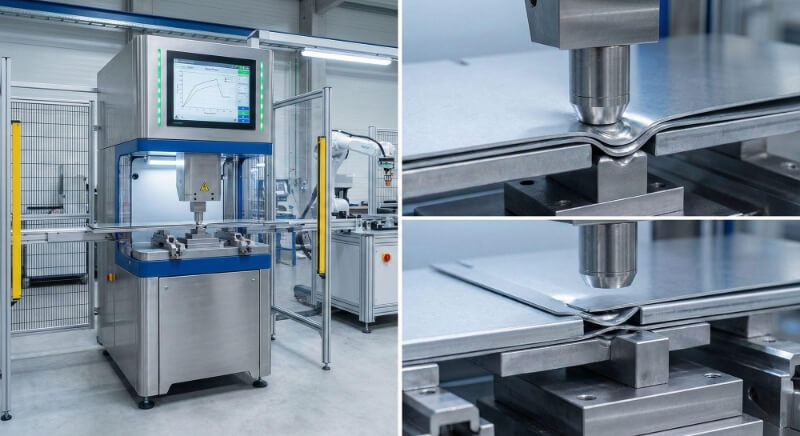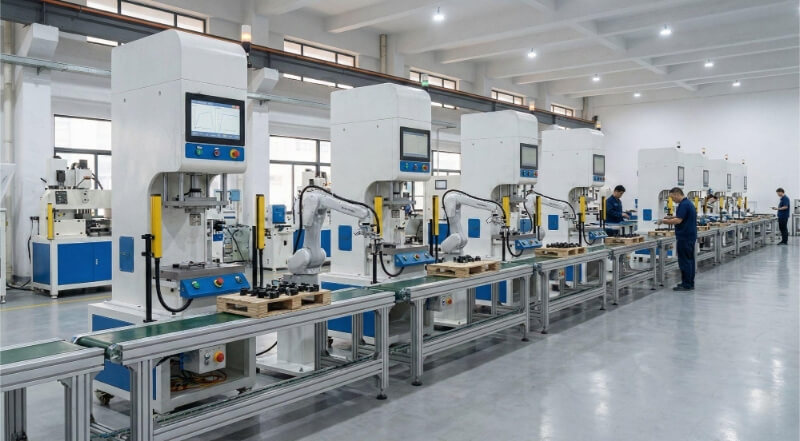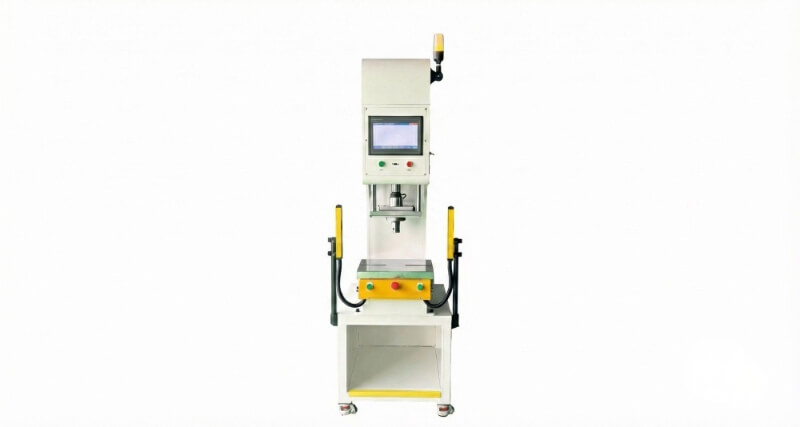Are you exploring ways to improve your production efficiency? Stainless steel casting could be the answer. This method provides a robust solution for manufacturing complex, high-strength components. By leveraging precision casting techniques, we can achieve superior dimensional accuracy and intricate detailing in our products.
Stainless steel casting is a pivotal technique for manufacturers looking to enhance product reliability and efficiency. By utilizing advanced casting methods, businesses can achieve more accurate and consistent parts, reducing waste and increasing the overall quality of their products.
Let’s break this down further and explore how adopting stainless steel casting can transform your manufacturing operations.
The Basics of Stainless Steel Casting Methods
Casting in stainless steel is crucial for producing durable, dimensionally precise parts. This process’s strength and corrosion resistance makes it suitable for various industries.
Casting Stainless Steel Processes Overview
Casting stainless steel is done in several ways, all tailored to specific requirements and complexity. Investment, die, and sand casting are the most common methods. Each method has a different approach to solidifying and molding the metal to meet tolerances and finishes.
Casting Methods that are Suitable for Stainless Steel
The casting technique to use depends on the part specifications, the production volume, and the budget. Sand casting is best for large, less complex items. Investment casting is ideal for work that requires high precision. Die casting is less common in stainless steel but can be used to produce small and medium-sized components.
The Step-by-Step Procedure for Each Method
- Investment Casting begins with the creation of a wax mold, which is coated with ceramic slurry. The wax is then melted, leaving behind a ceramic mold. The mold is filled with molten stainless steel, which solidifies.
- Sand casting is the process of pressing a pattern into the sand. The molten steel is poured into the sand mold and allowed to cool. The cast part is removed by breaking the sand away.
- Dies are made from pre-hardened steel. These molds are filled with molten stainless steel under high pressure. The metal quickly solidifies, and then the die is opened.
Each method is unique and has specific steps. This ensures that the correct process is applied for the application.
Preparation of Stainless Steel Casting
The stainless steel casting process must begin with a thorough preparation to achieve quality and efficiency. This stage requires meticulous material selection and mold design.
Material Preparation
Selecting Stainless Steel Alloys
A suitable stainless steel alloy must be chosen. The selection is based on factors such as corrosion resistance and strength. Some of the most common alloys are 304 and 316 stainless steel, known for their durability and resistance to environmental elements.
Pre-treatment processes
Before casting the stainless steel, it must go through various pre-treatment procedures. This may include melting, alloying (where additional elements are added), and heat treatment, which ensures uniformity and reduces the porosity of the final product.
Designing Molds in Stainless Steel
Types of Molds
Molds for stainless-steel casting can be made of different materials, depending on the casting technique.
- Ceramic Molds have been used for investment casting because of their ability to handle high temperatures and capture fine details.
- Sand Molds have been chosen for their cost-effectiveness and versatility in sand casting.
- Steel Dies are used for die casting because of their durability and the ability to produce large volumes with consistent quality.
Mold Design Tips
To ensure quality and precision, it is essential to design molds for casting stainless steel.
- Use proper gate systems so the steel can flow uniformly and fill the mold without air pockets.
- Include adequate vents that allow gases to escape from the casting process. This will prevent defects.
- Design molds to minimize shrinkage and distortion during cooling by considering the contraction properties of stainless steel.
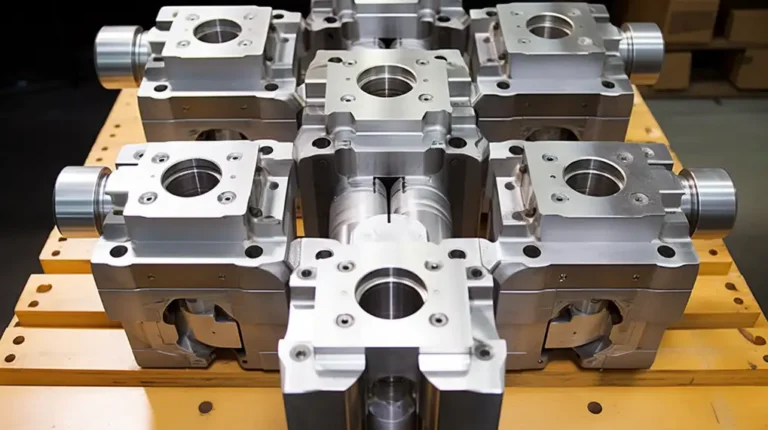
The Stainless Steel Casting Process
To achieve the best results, it is essential to understand the stainless steel casting process. This process includes crucial stages such as melting, pouring, and solidification. Each stage requires precise control to ensure the finished product’s integrity.
Melting and pouring
Equipment and Techniques Used
To maintain the properties of stainless steel, melting must be done with care. Induction and electric arc furnaces melt stainless steel because they offer controlled, efficient, and clean melting.
Handling high temperatures
Specialized equipment is required to handle the high temperatures needed to melt stainless. The materials used to make the crucibles and ladles used to pour molten stainless steel into containers must withstand temperatures above 1,400degC. Operators must also wear protective gear to ensure safety during the high-temperature phase.
Solidification and cooling
Cooling Stainless Steel in Phases
The cooling process is just as crucial as the melting. As it cools, stainless steel goes through several phases:
- From liquid to mushy: As the temperature falls, the steel starts to solidify on the walls of the mold, forming a semisolid “mushy.”
- From a mushy state to a solid state: The material solidifies towards the center, increasing its density and strength.
Controlling cooling rates to avoid defects
The rate of cooling stainless steel can significantly impact the quality. Rapid cooling can cause internal stresses and cracks. A slow cooling rate could result in coarse grains that reduce the mechanical properties of steel.
Techniques like controlled furnace cooling and directional solidification can be used to manage these rates. The cooling rate is adjusted according to the thickness and complexity of the part to optimize the microstructure and minimize defects.
After-Casting Operation
After the casting process, it is essential to perform several post-casting processes to improve appearance and performance.
How to remove gates and risers?
Once the casting has solidified, gates and risers that facilitate the flow of molten material and act as a reservoir must be removed. The following techniques can be used to remove them:
- Cutting: High-speed saws or mechanical cutting tools remove the more enormous gates and risers.
- Grinding: Grinding can remove finer material and smooth areas where gates or risers are attached. This method is used to achieve a smooth surface after removing the excess material that was left over from cutting.
Surface Finishing Techniques
Surface finishing is necessary to improve the cast part’s mechanical and aesthetic properties. Surface finishing techniques include the following:
- Sandblasting: This method involves blasting a surface with an abrasive substance, such as sand, under high pressure.
- Finishing: The polishing process is used to create a high-gloss surface.
- Passivation: This involves the application of a mild oxidant on the surface to create a protective oxide film that prevents corrosion and increases the longevity of the component.
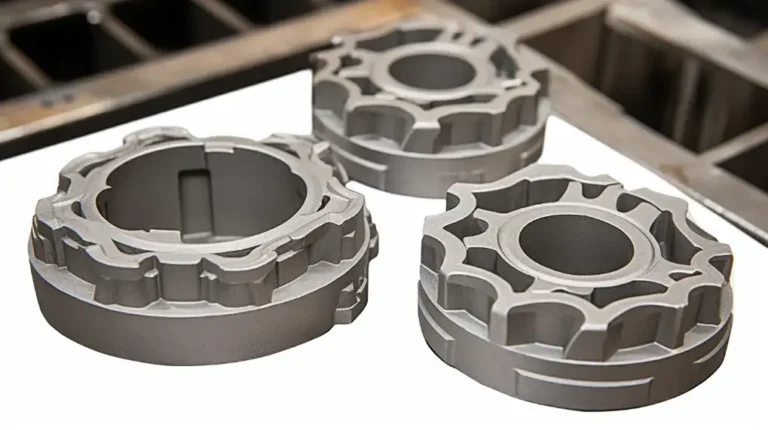
Casting Stainless Steel – Challenges and Solutions
Casting stainless steel is a complex process that presents many challenges. By addressing these challenges effectively, you can ensure high-quality and durable products.
Common Casting Issues
- Porousness: Small holes or cavities can appear in the cast due to trapped gasses or inadequate mold filling.
- Corrosion and Oxidation: High temperatures can cause corrosion, affecting an alloy’s integrity and appearance.
- Warping and Shrinkage: As stainless steel cools, it can contract unevenly, resulting in dimensional errors or warped shapes.
- Cold shuts: Occurs when molten metal streams do not fuse properly in the mold, resulting in weak spots or incomplete casting.
Solution and Best Practices
Optimizing Mold Design
- Improved Gate System: An efficient gate system will ensure the mold is filled entirely and uniformly, reducing the incidence of cold cuts and porosity.
- Venting Solution: Proper venting will allow gases to escape and minimize porosity, ensuring a cleaner casting.
Controlling material and process parameters
- Correct Alloy Selection: Choosing a suitable stainless steel alloy can help prevent corrosion.
- Temperature Regulation: Controlling melting and pouring temperature reduces oxidation and ensures the mold is filled.
Advanced Techniques for Quality Improvement
- Simulation software: Casting simulation software predicts and addresses potential issues before production begins.
- Vacuum casting: By minimizing air exposure, vacuum cast techniques can reduce oxidation.
After-Casting Treatments
- Heat Treatment: Processes such as annealing or stress relieving can improve mechanical properties and reduce internal stresses.
- Quality Assurance practices: Implementing strict inspection and testing protocol, including destructive and nondestructive test methods.
Cast Stainless Steel Applications
- Automotive: Components such as exhaust manifolds and transmission parts.
- Aerospace: critical flight components, turbine parts, and landing equipment assemblies.
- Medical devices: Surgical tools, implants, and orthopedic device components.
- Artwork and Sculptures: Durable and corrosion-resistant artworks suitable for indoor and outdoor settings.
- Home Appliances: Includes kitchen tools, cutlery, and major appliance parts like burner grates and wash drums.
Conclusion
Casting stainless steel is a necessary manufacturing process, combining durability, precision, and versatility. It provides customized solutions that meet strict standards for strength and corrosion resistance. Adopting the best casting practices can improve the functionality and quality of stainless steel casts.
Do you need a reliable sheet metal parts manufacturer? Shengen is the place to go. We specialize in sheet metal laser cutting, bending, surface finish, and CNC Machining. Reach out to Shengen Today and seek help from professionals!
FAQ
How can you prevent corrosion during the casting process of stainless steel?
You can prevent oxidation by casting in an inert environment, using protective coatings, or performing the process in a vacuum. These methods reduce oxygen exposure, which helps minimize oxidation.
What are the costs of casting stainless steel alloy?
The higher materials costs and the complexity required to achieve high-quality results and manage oxidation make stainless steel casting more expensive. Wear and tear of tools and molds may also increase maintenance costs.
What effect does the temperature of the environment have on casting?
The environment’s temperature can affect the cooling rate, the behavior of the mold, and the properties and dimensions of the stainless steel cast. To maintain product quality and process efficiency, temperature fluctuations must be controlled.
More Resources:
Benefits of Vacuum Casting – Source: Prototype Projects
Non-Destructive Testing for Cast Metals – Source: American Metal Testing
Impact of Environmental Temperature on Metal Casting – Source: Syscon Sensors
Hey, I'm Kevin Lee

For the past 10 years, I’ve been immersed in various forms of sheet metal fabrication, sharing cool insights here from my experiences across diverse workshops.
Get in touch

Kevin Lee
I have over ten years of professional experience in sheet metal fabrication, specializing in laser cutting, bending, welding, and surface treatment techniques. As the Technical Director at Shengen, I am committed to solving complex manufacturing challenges and driving innovation and quality in each project.

